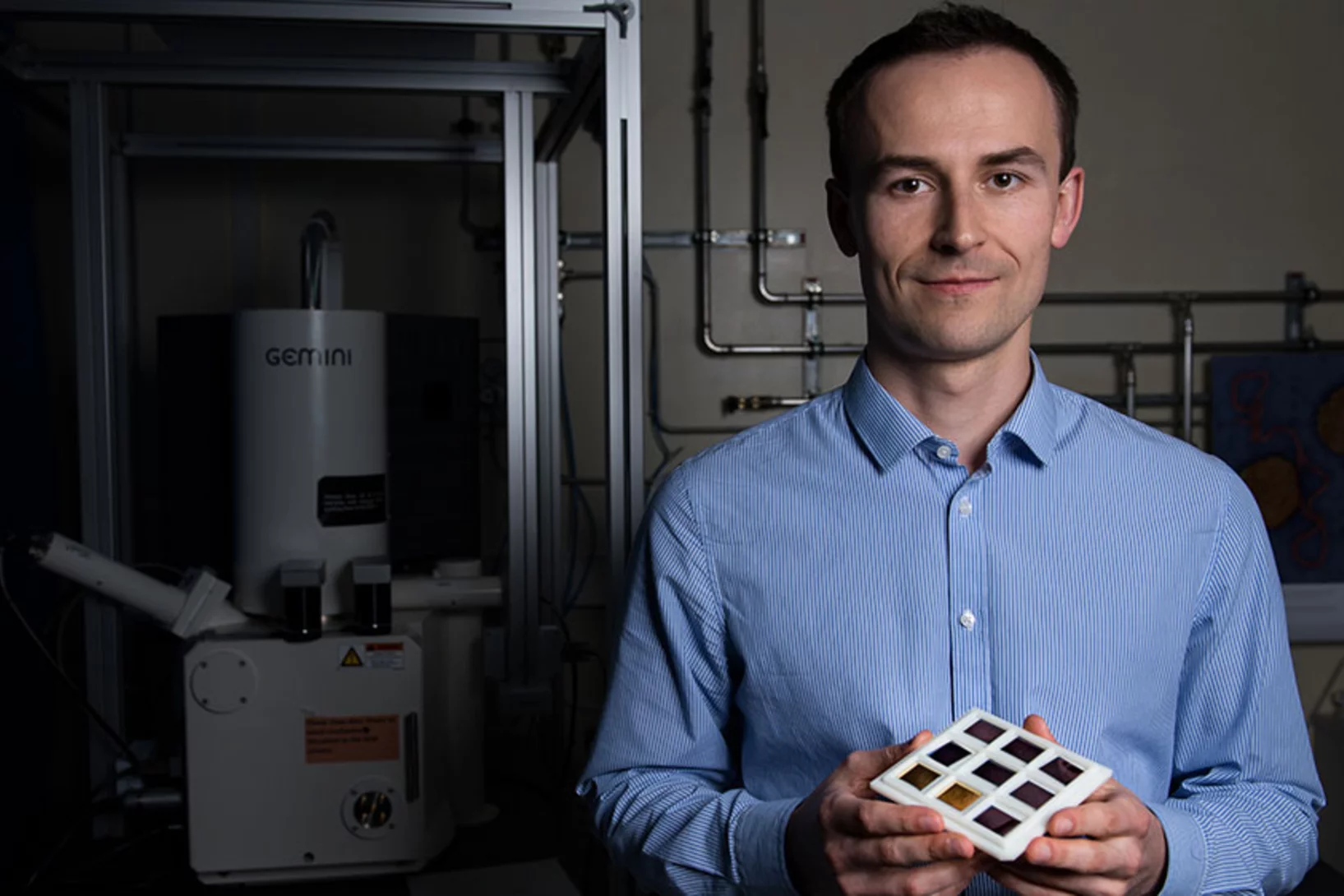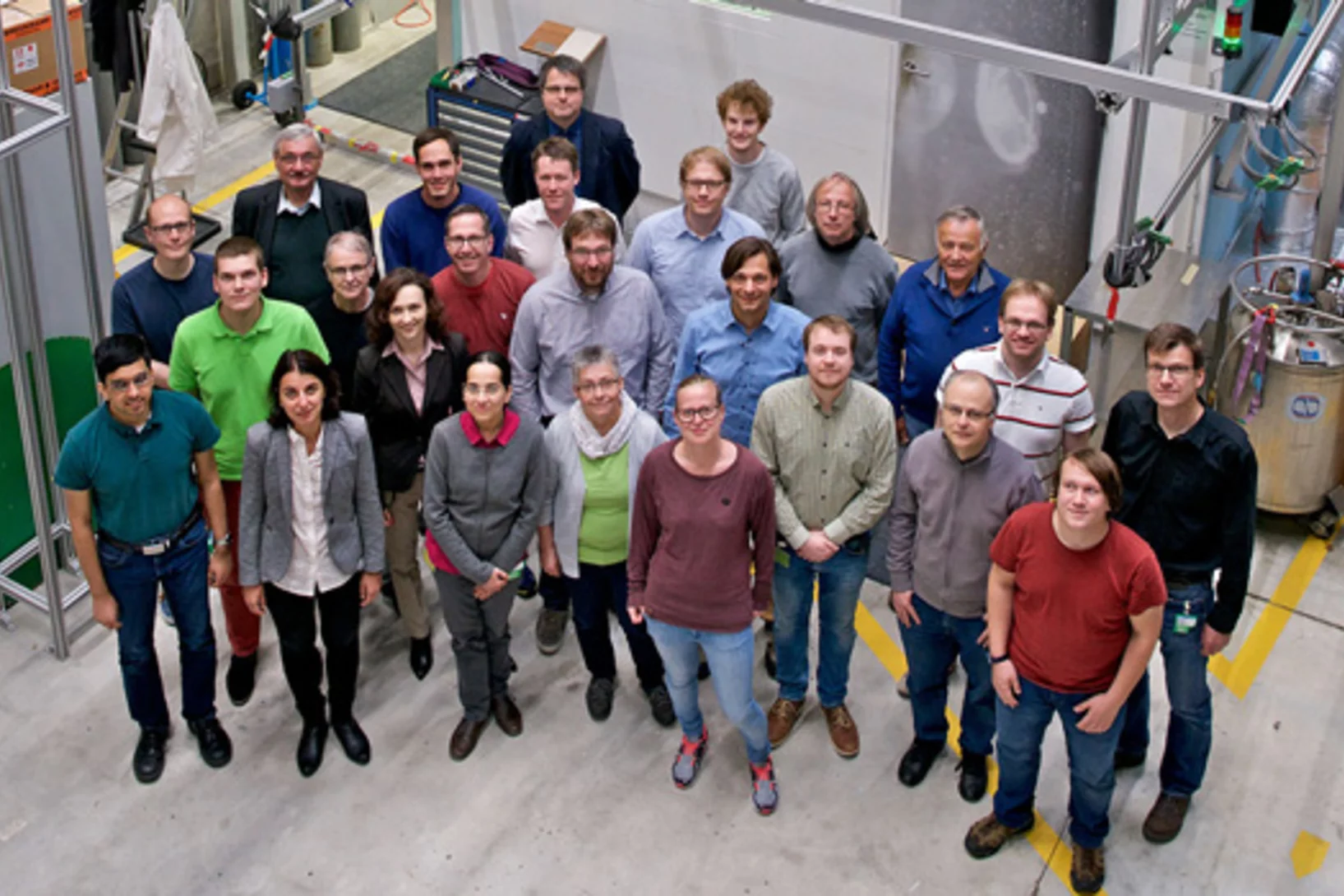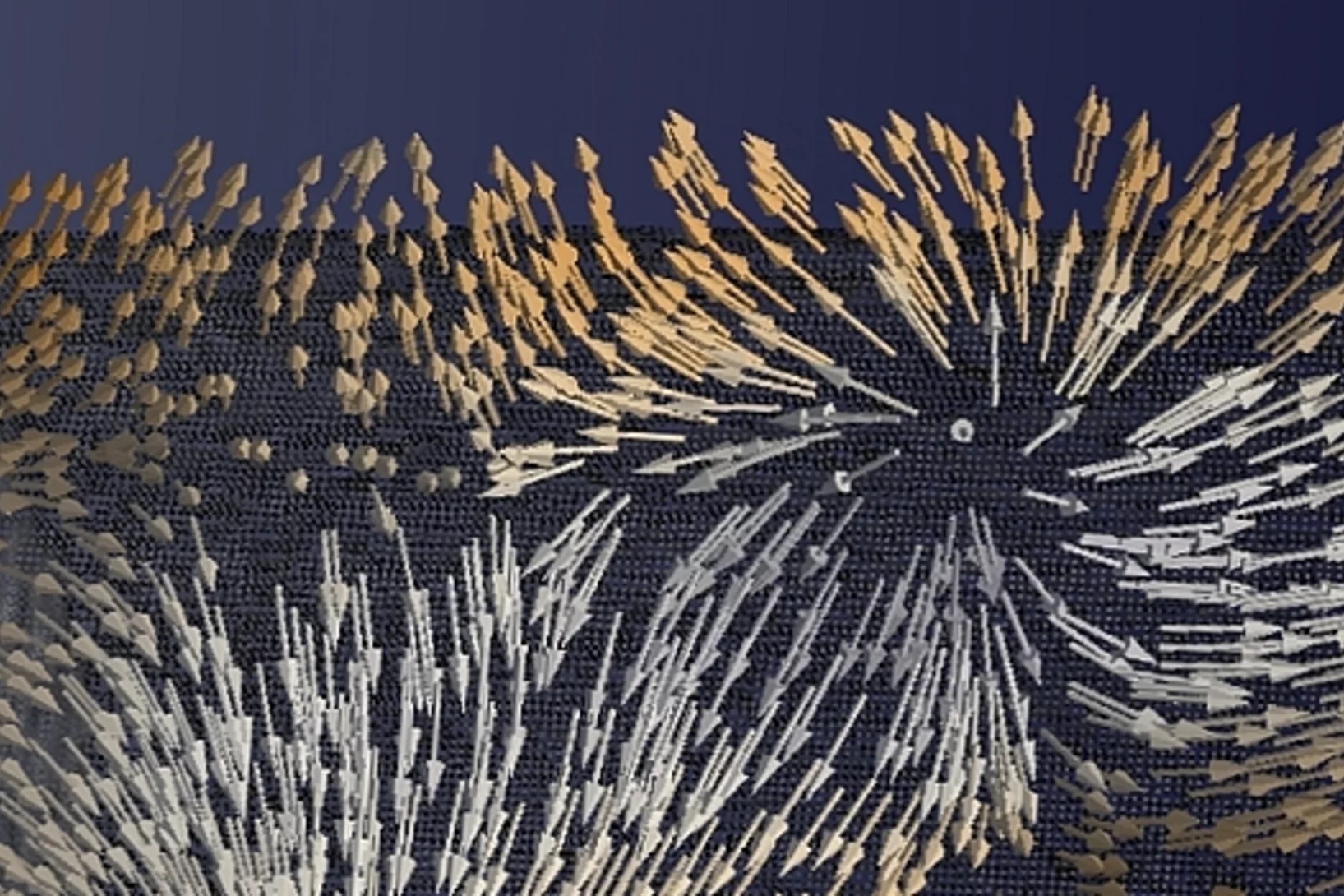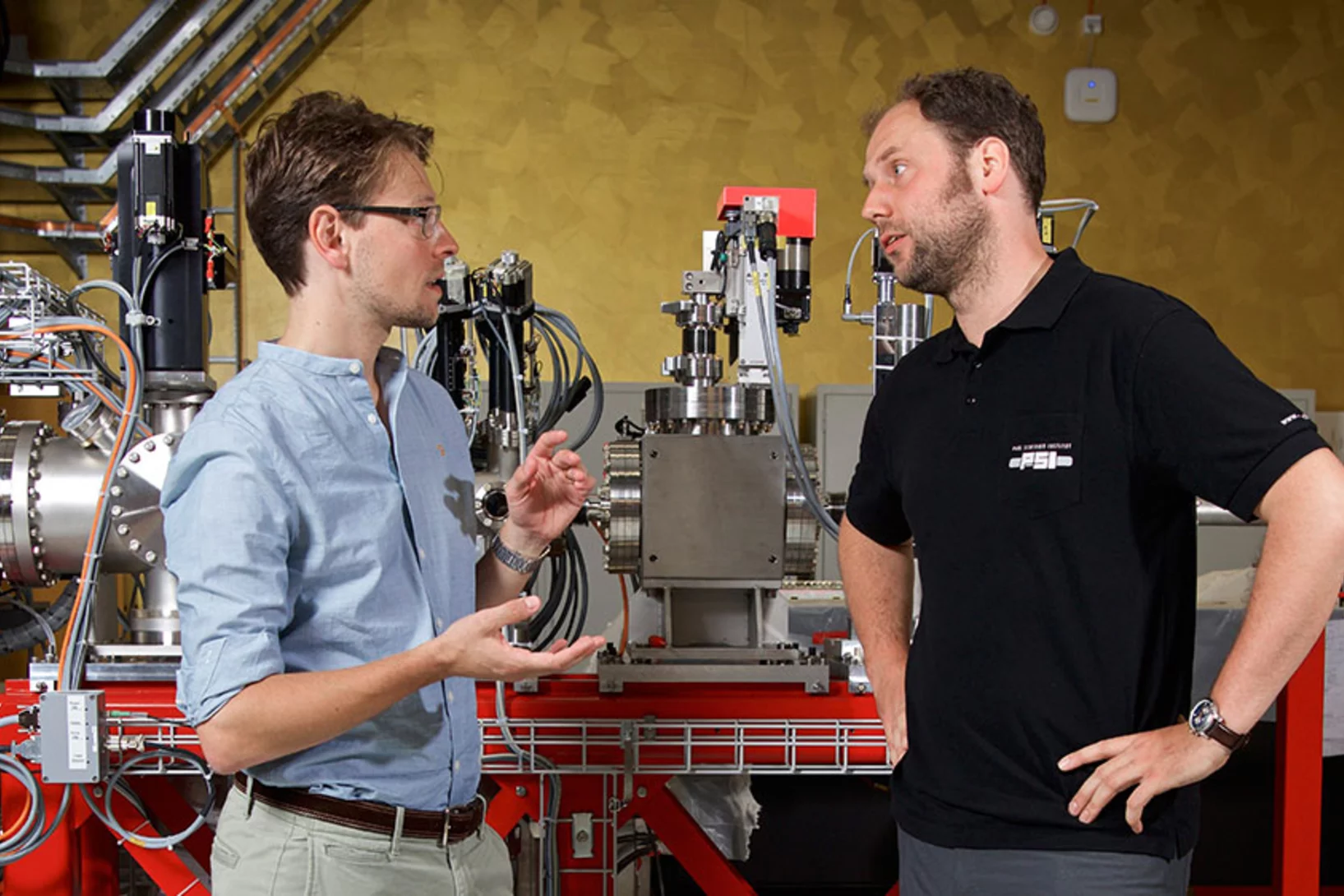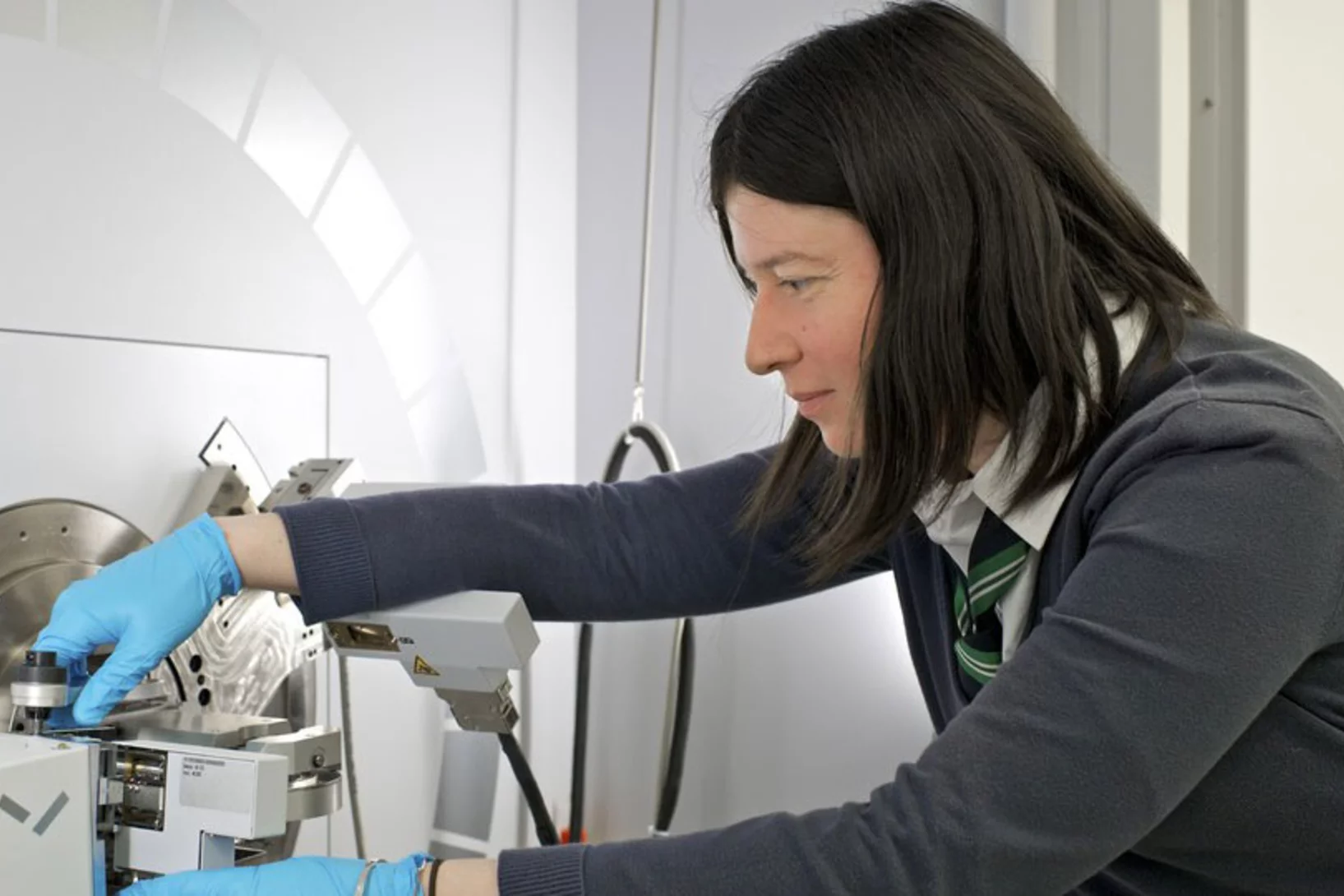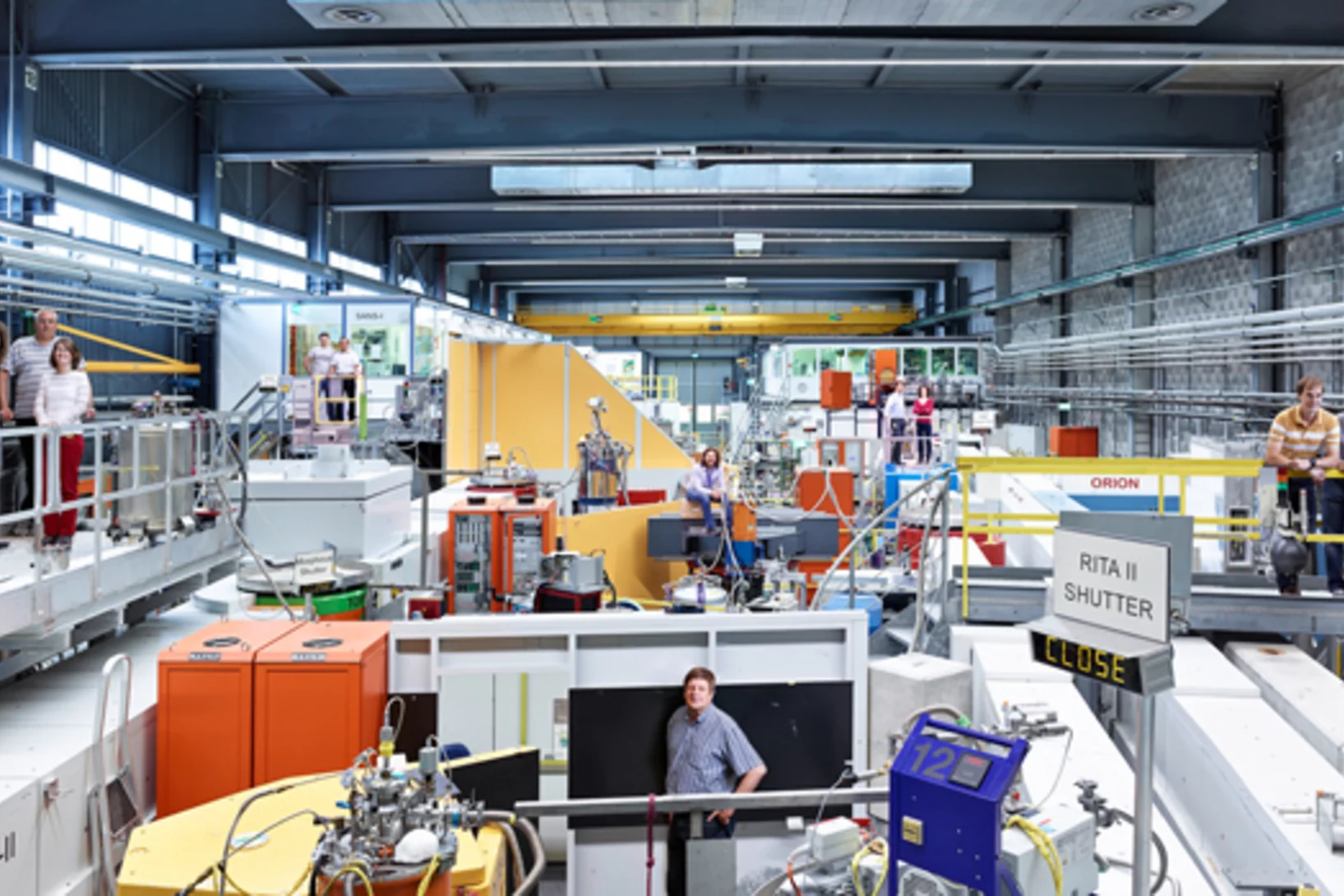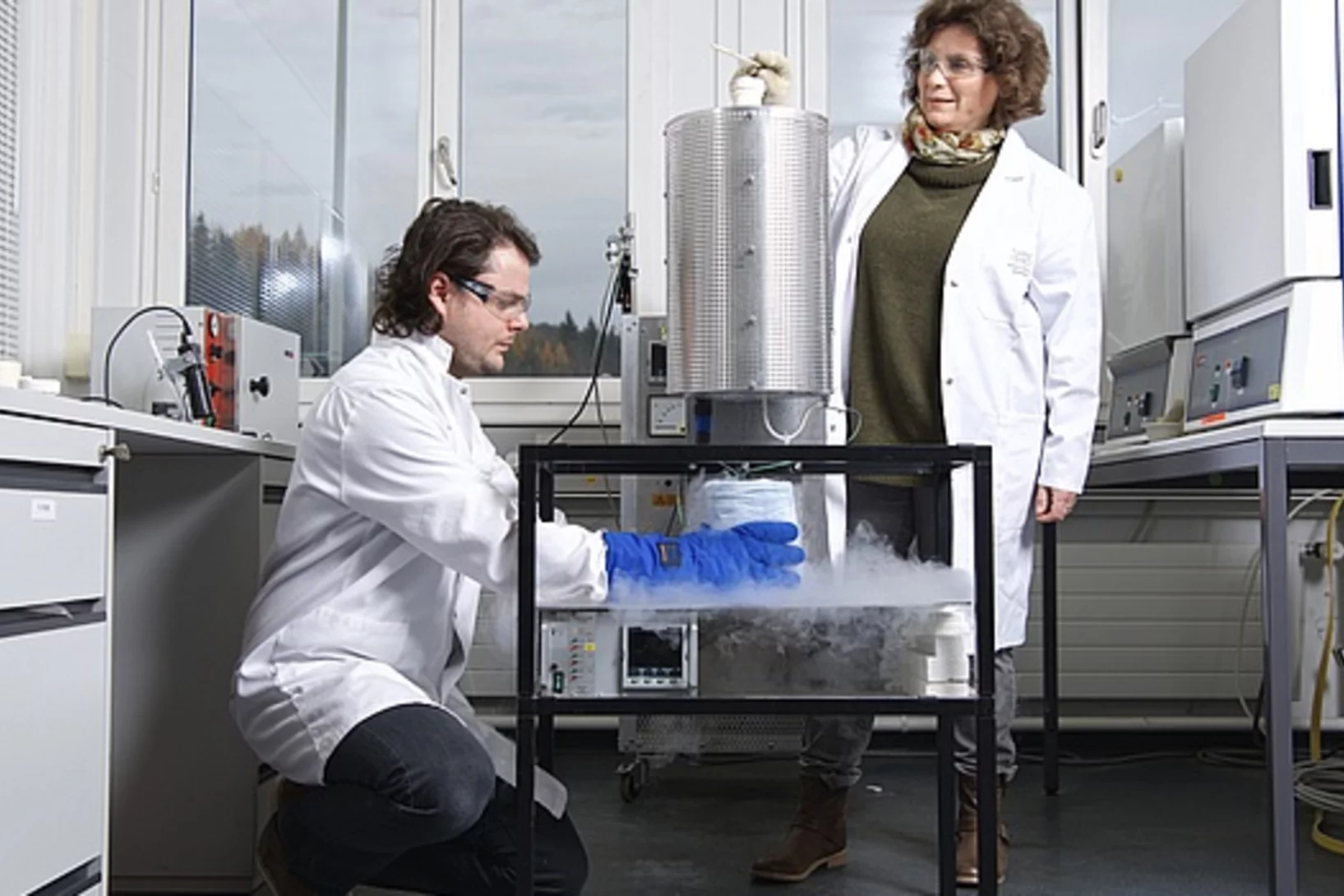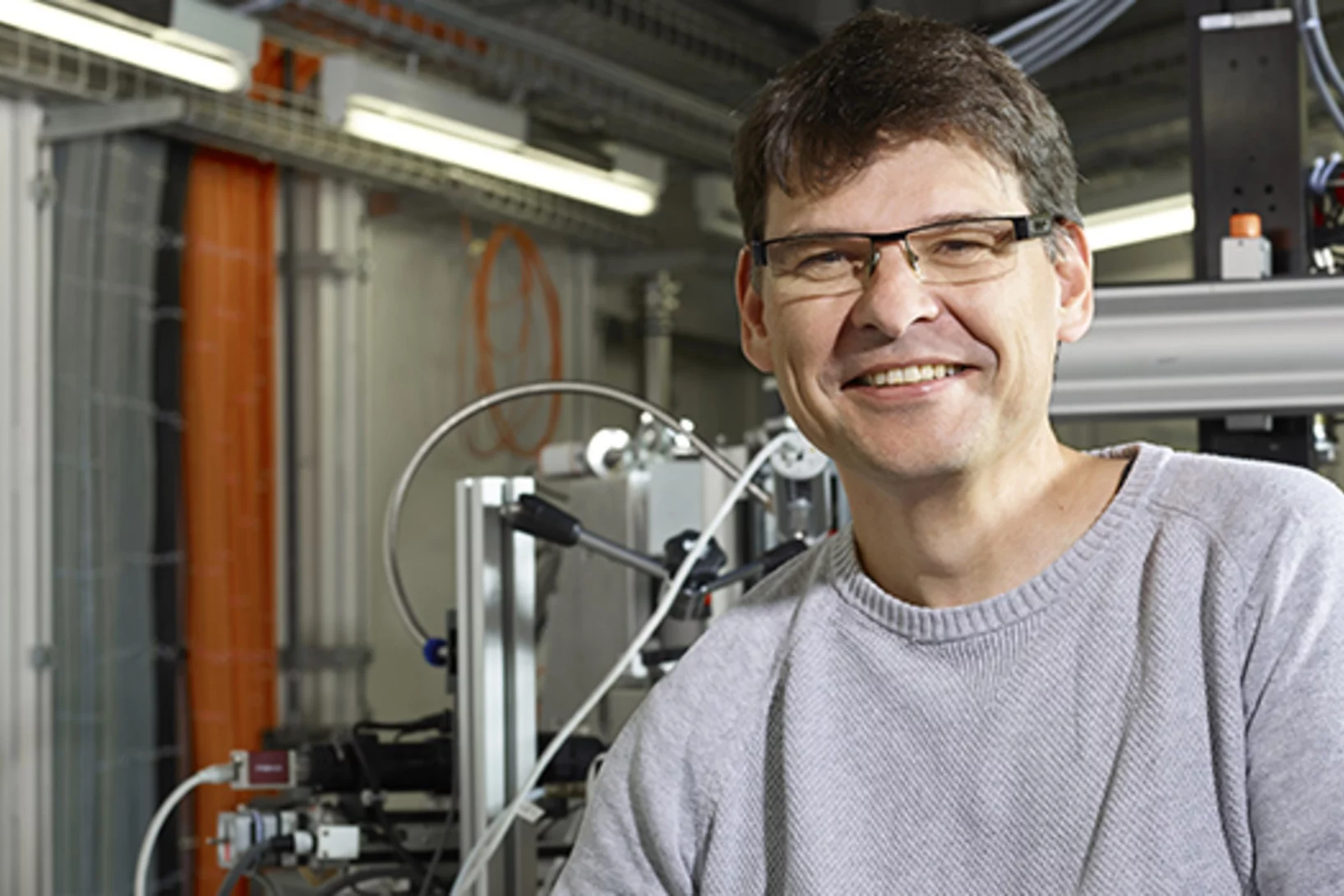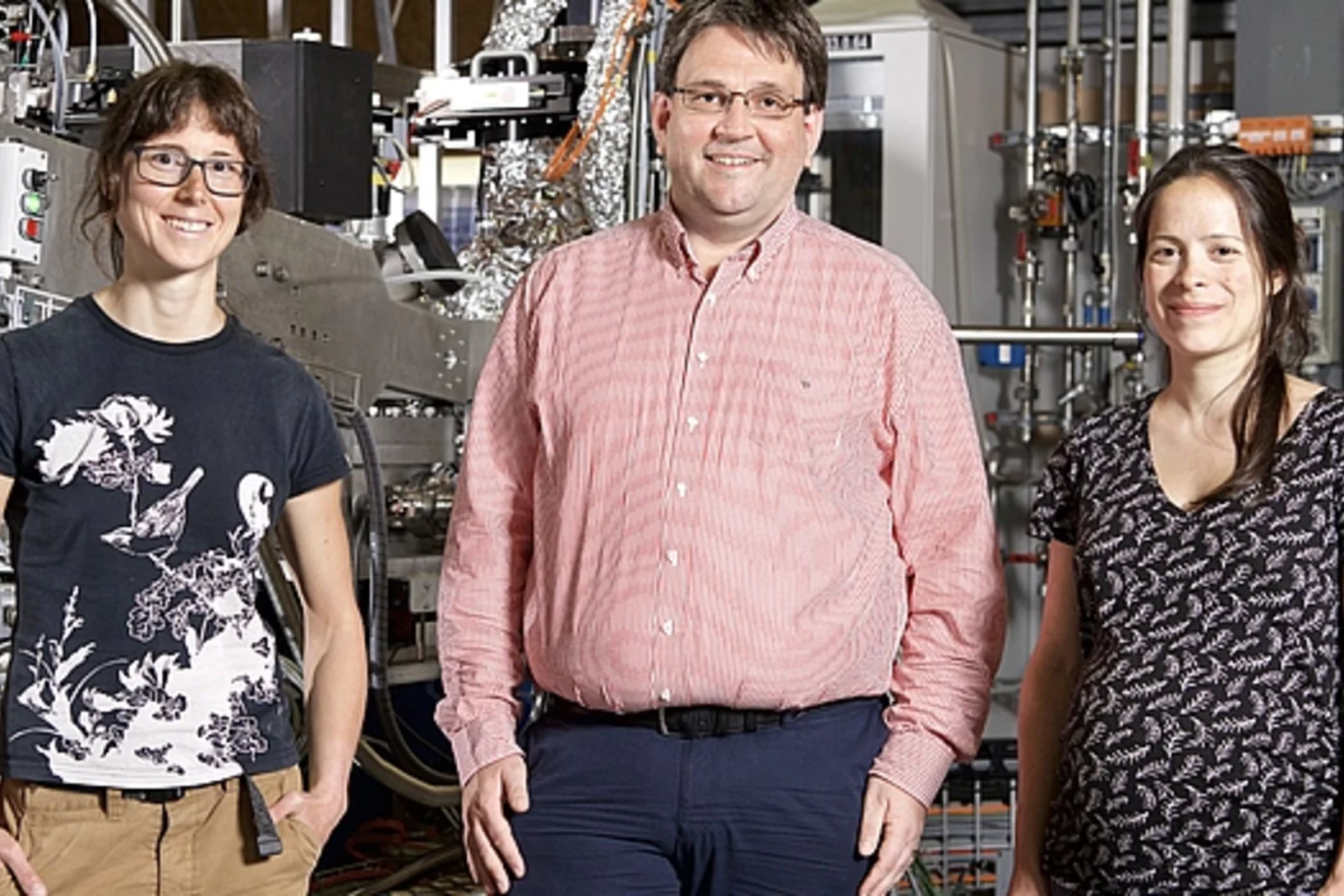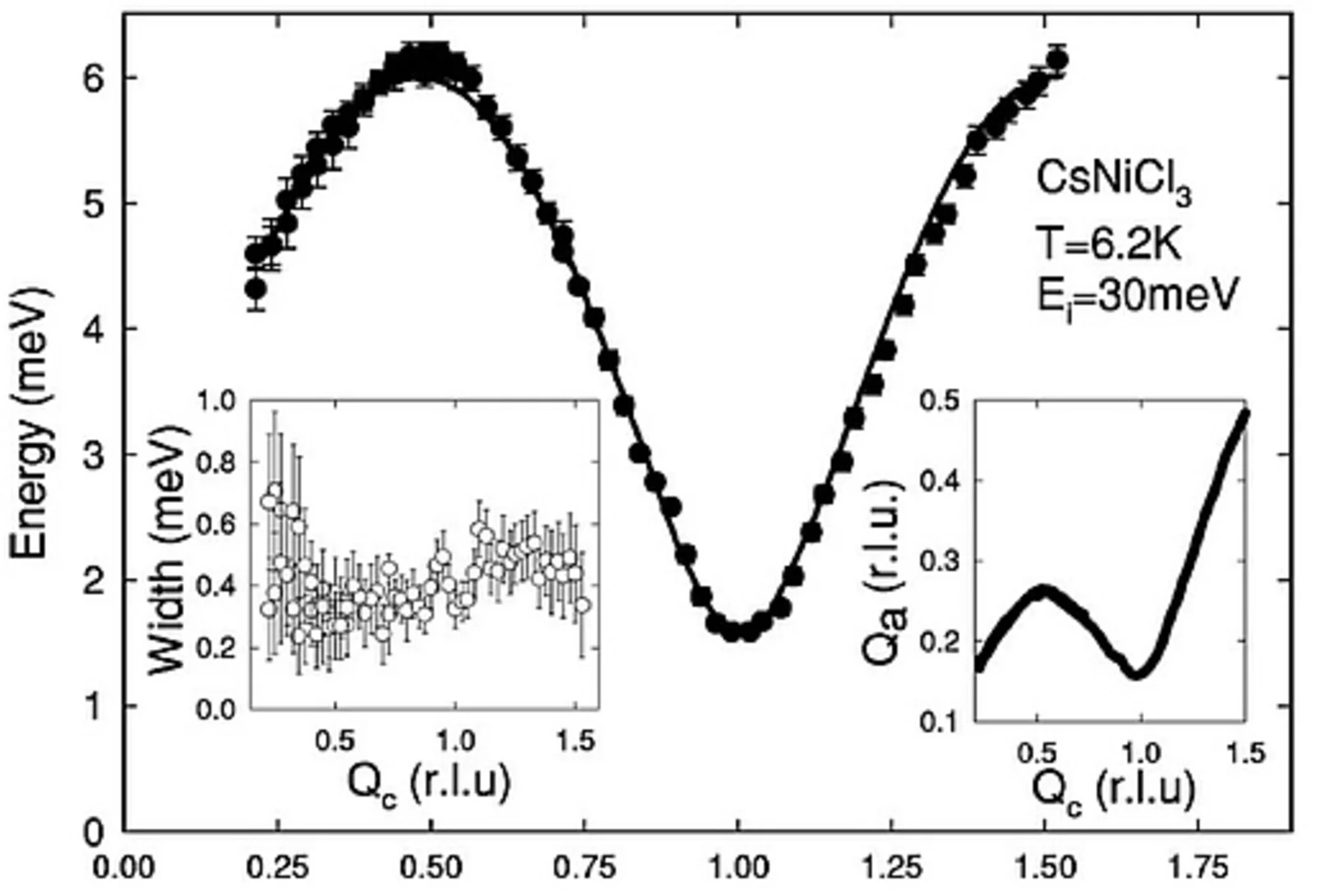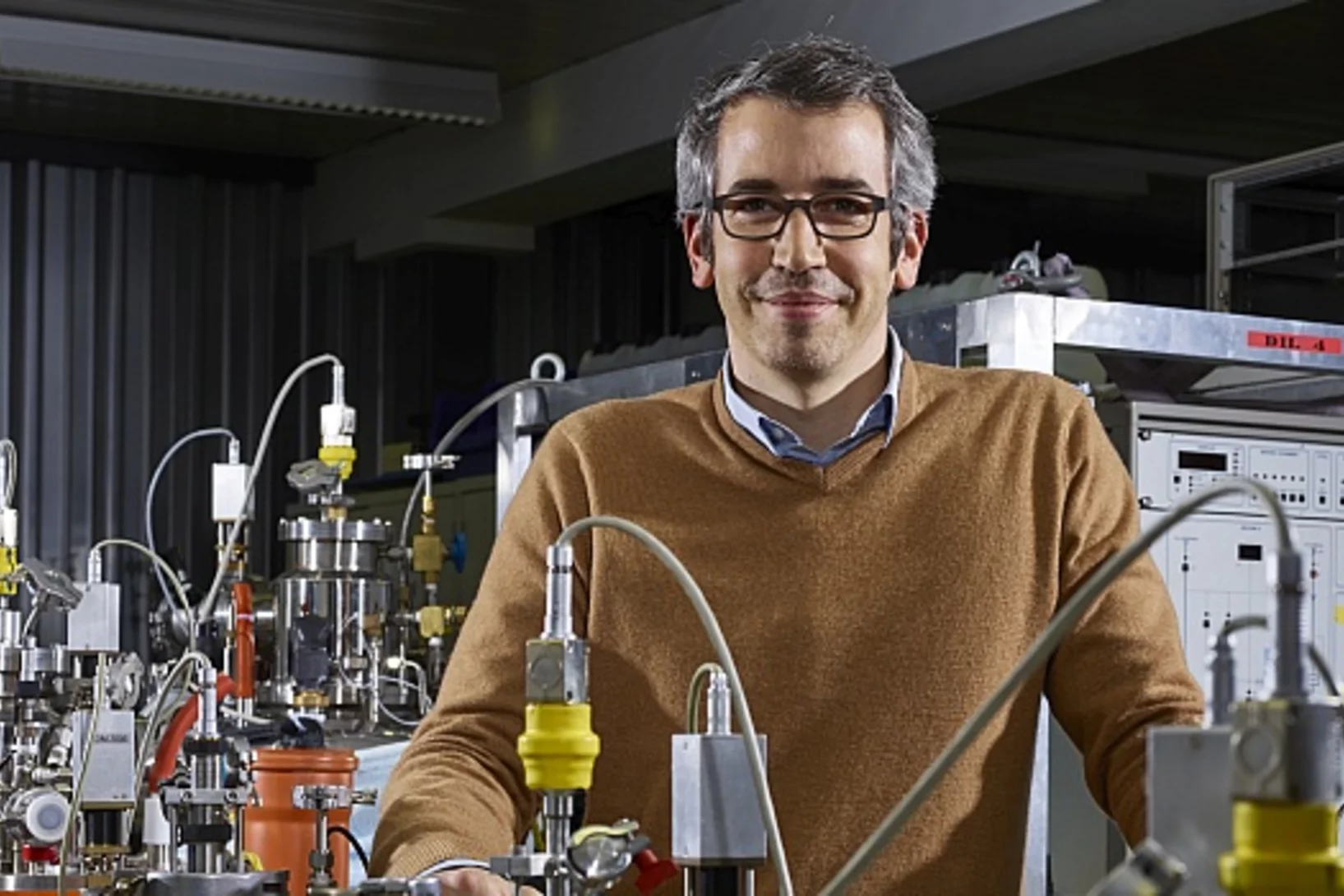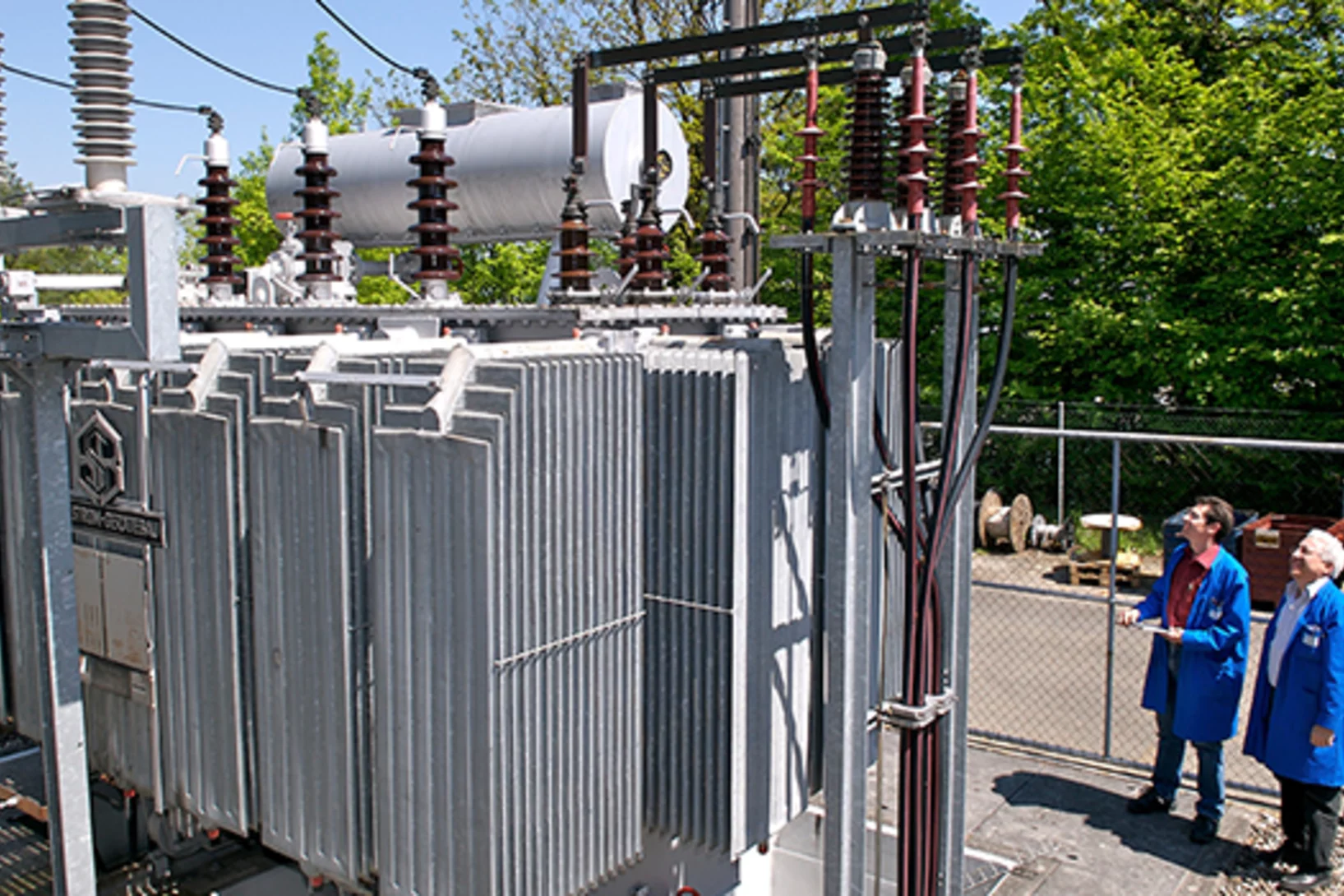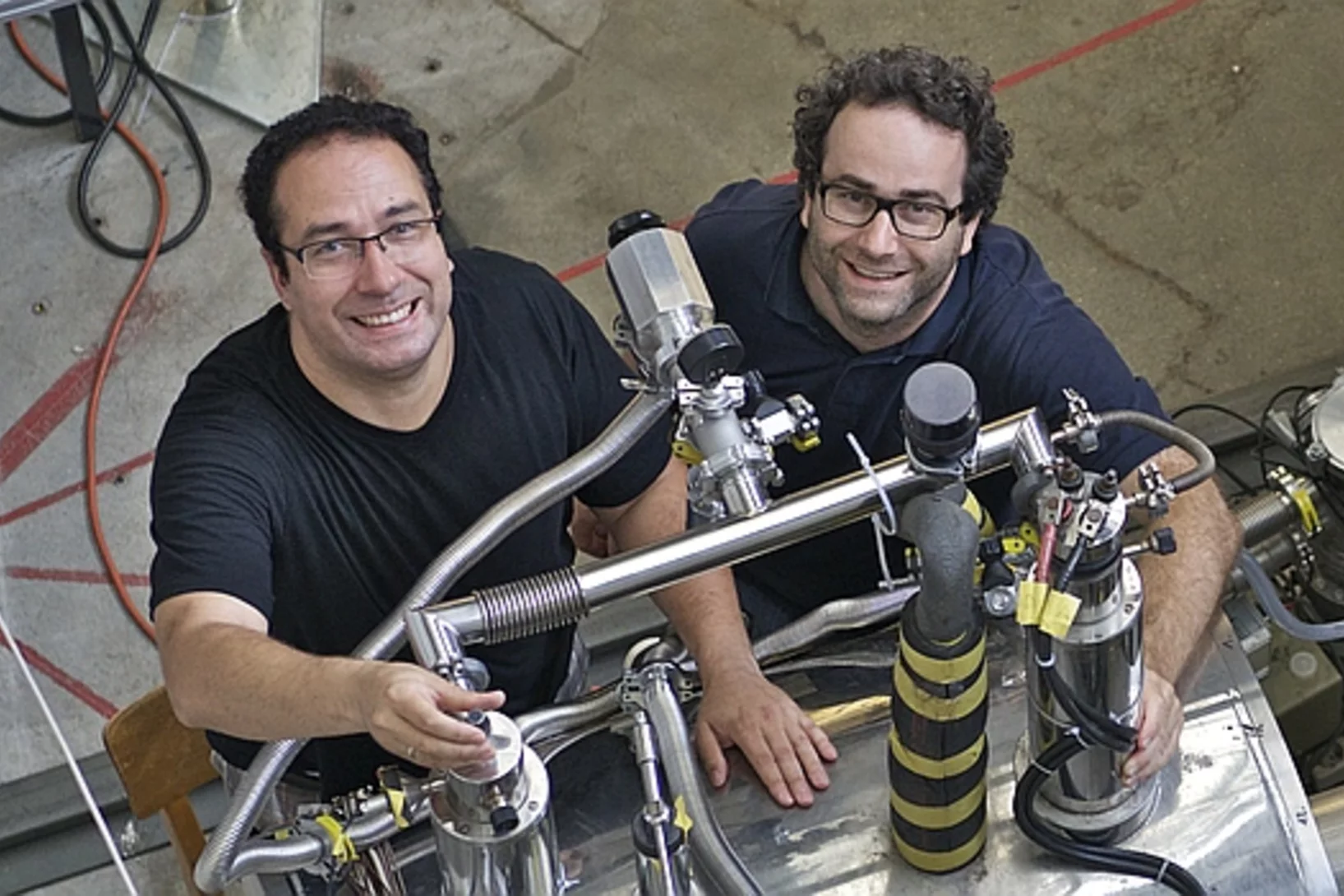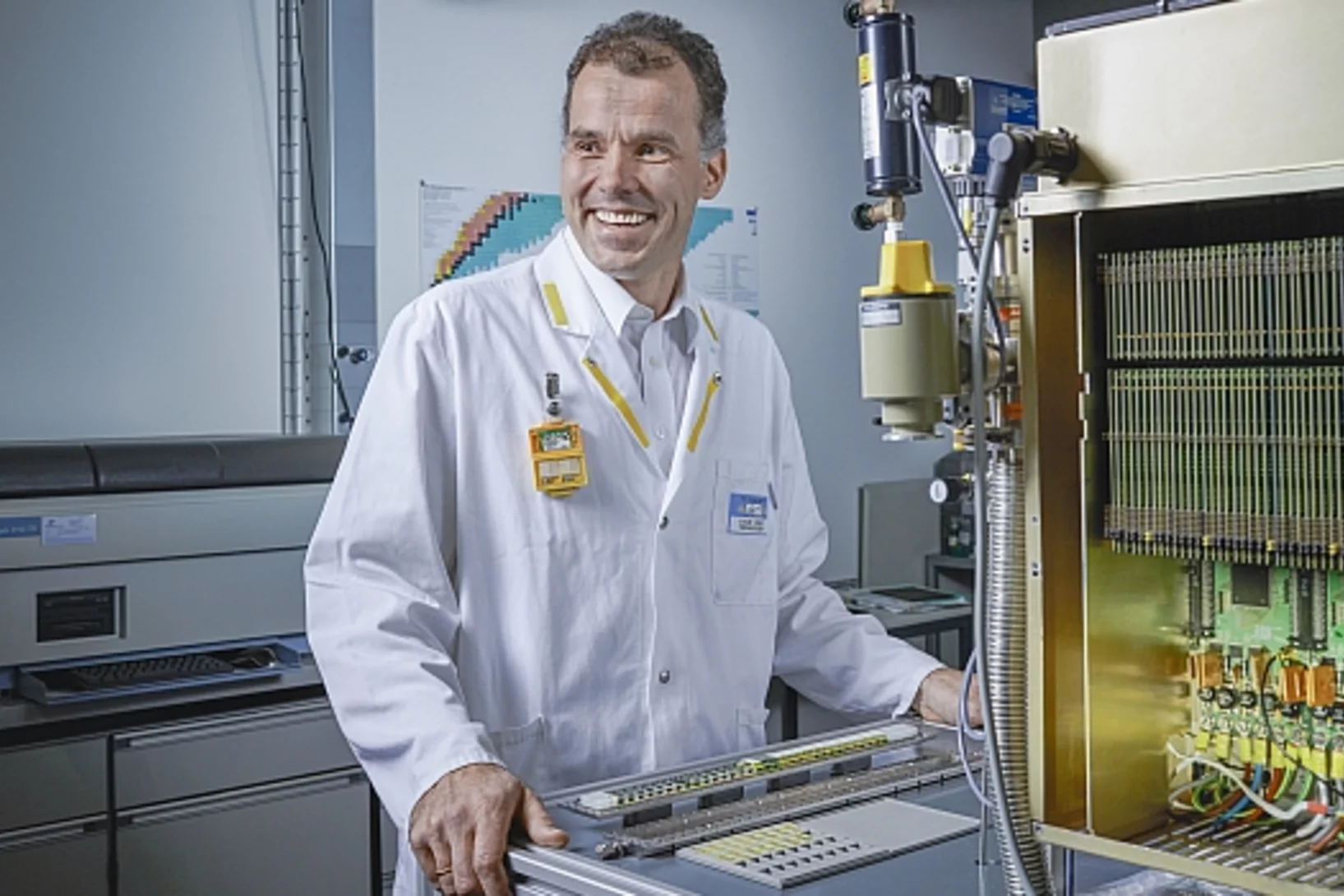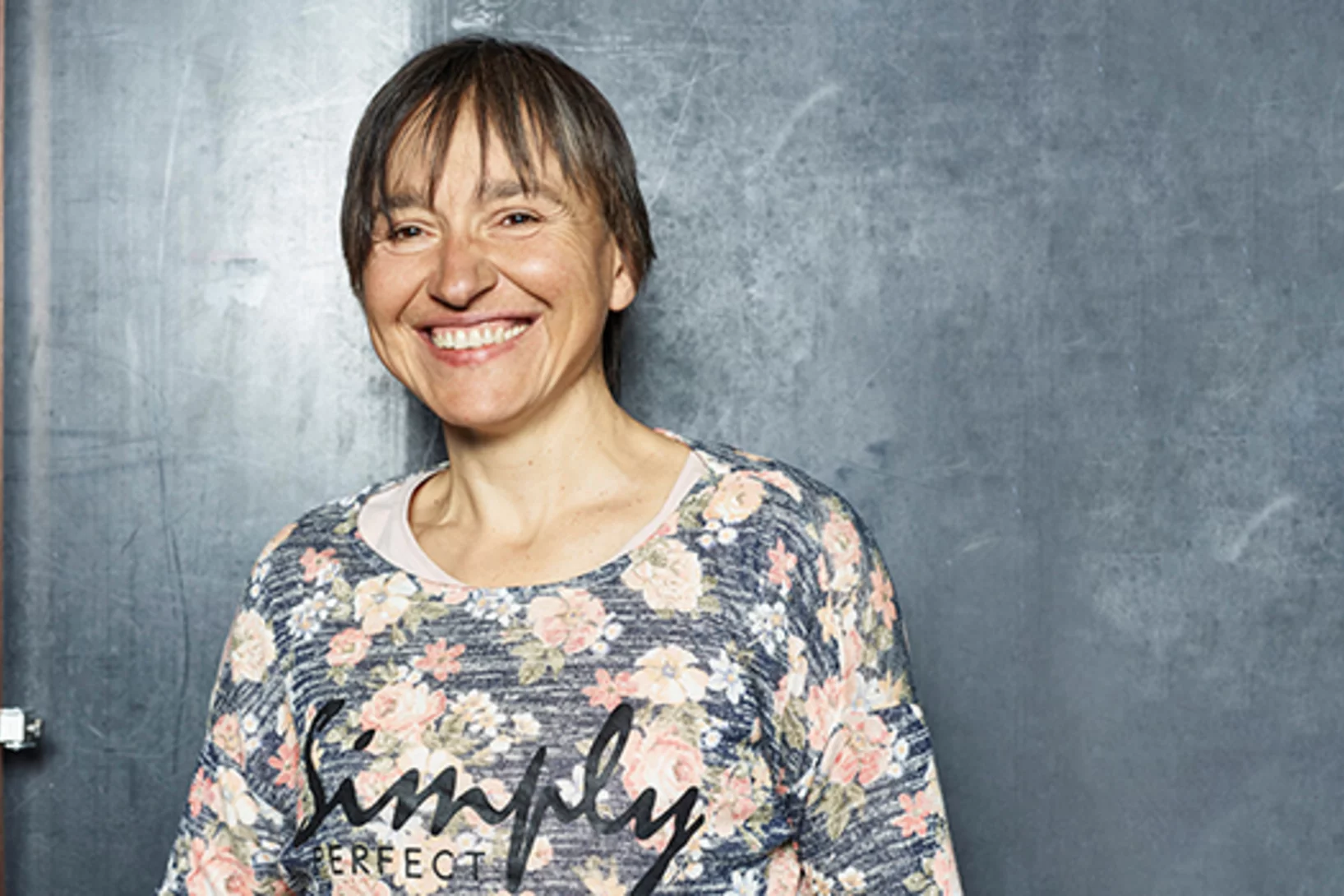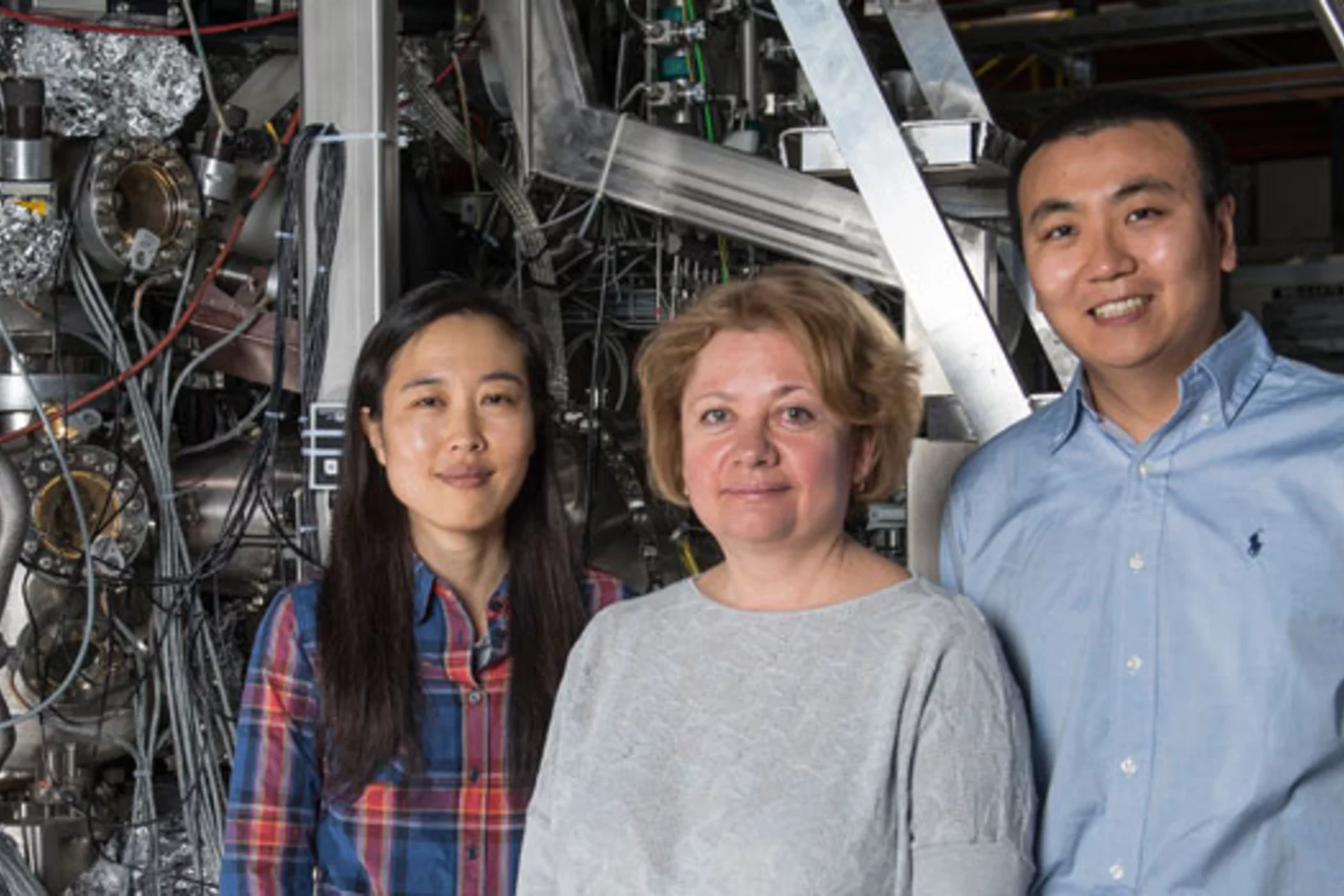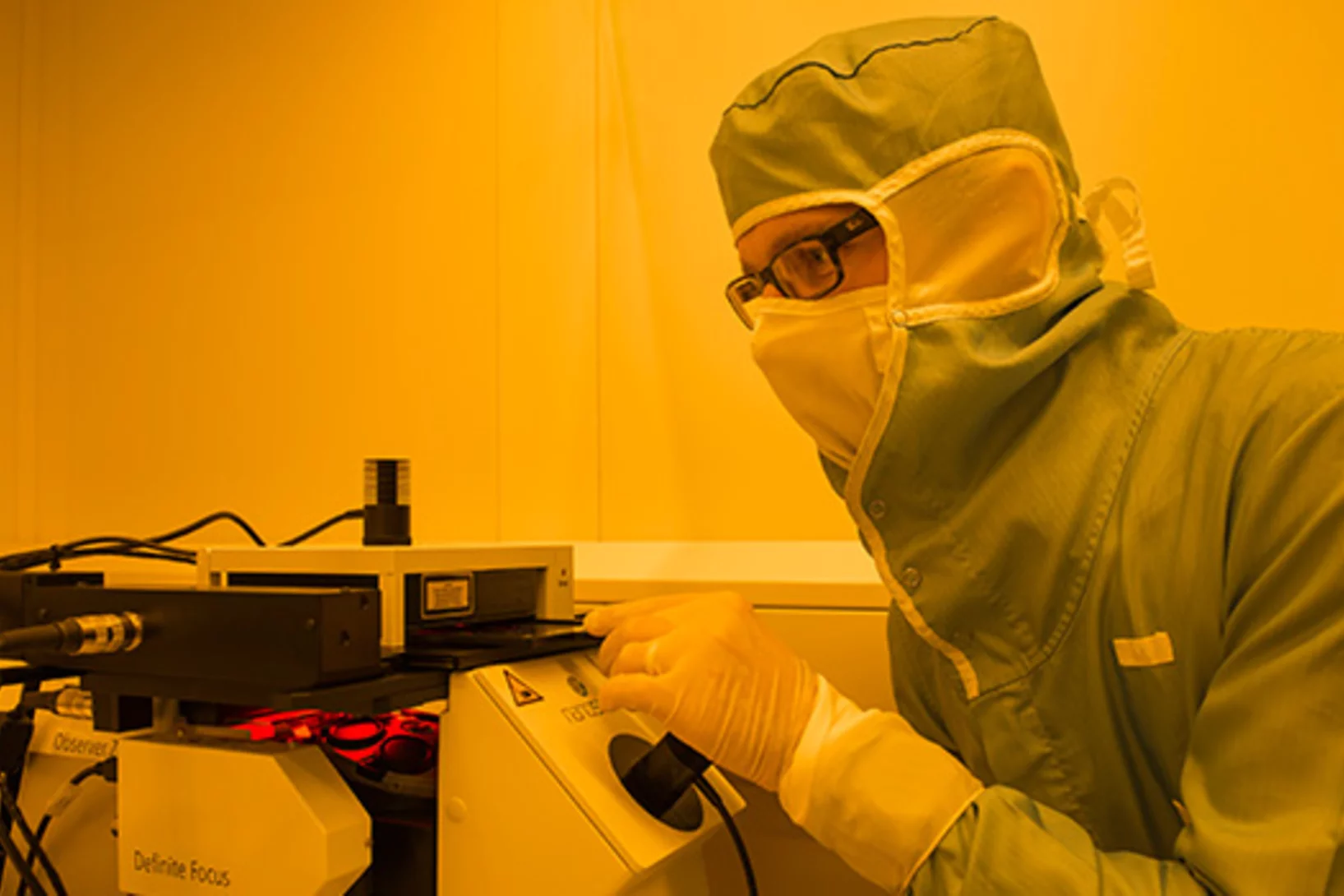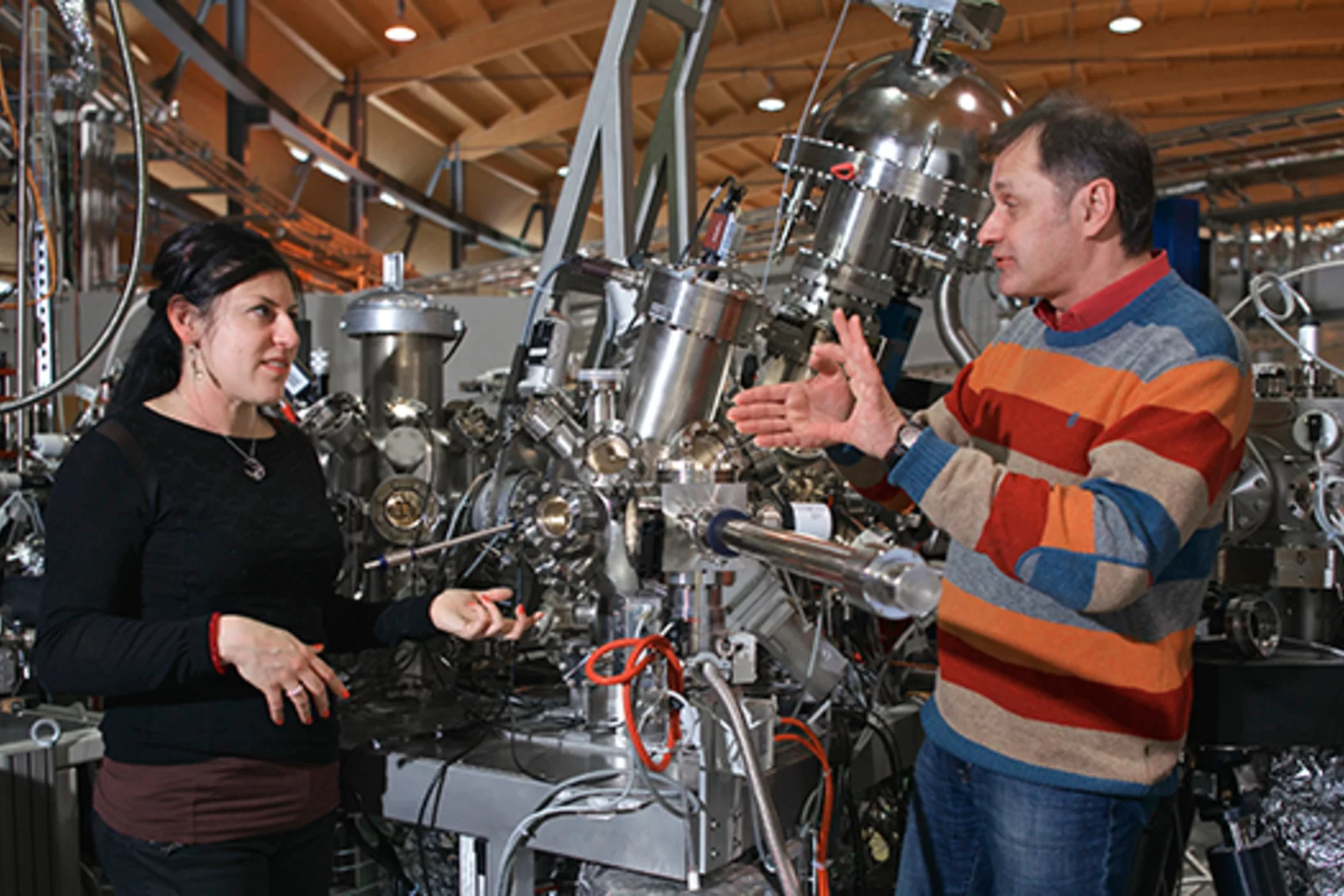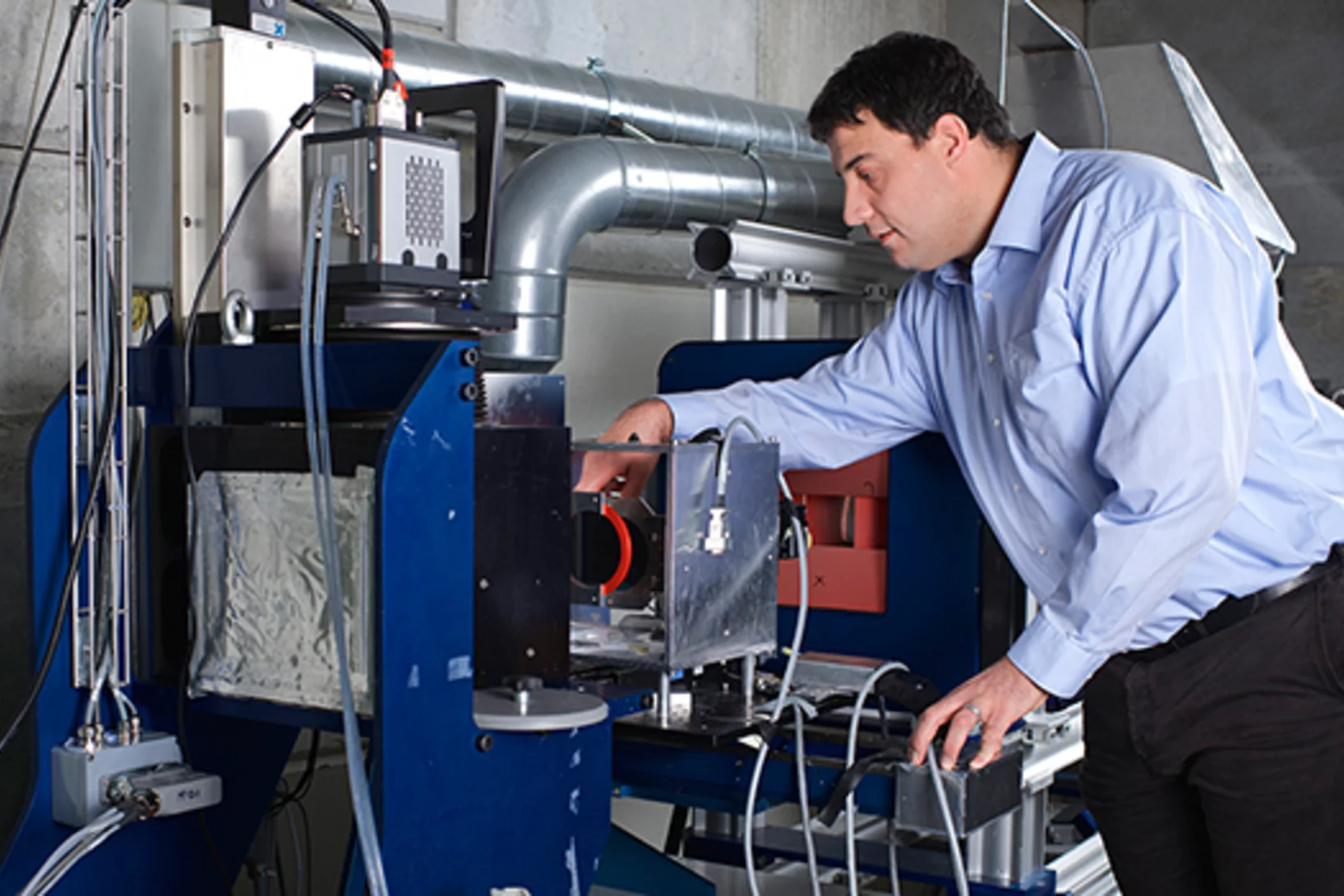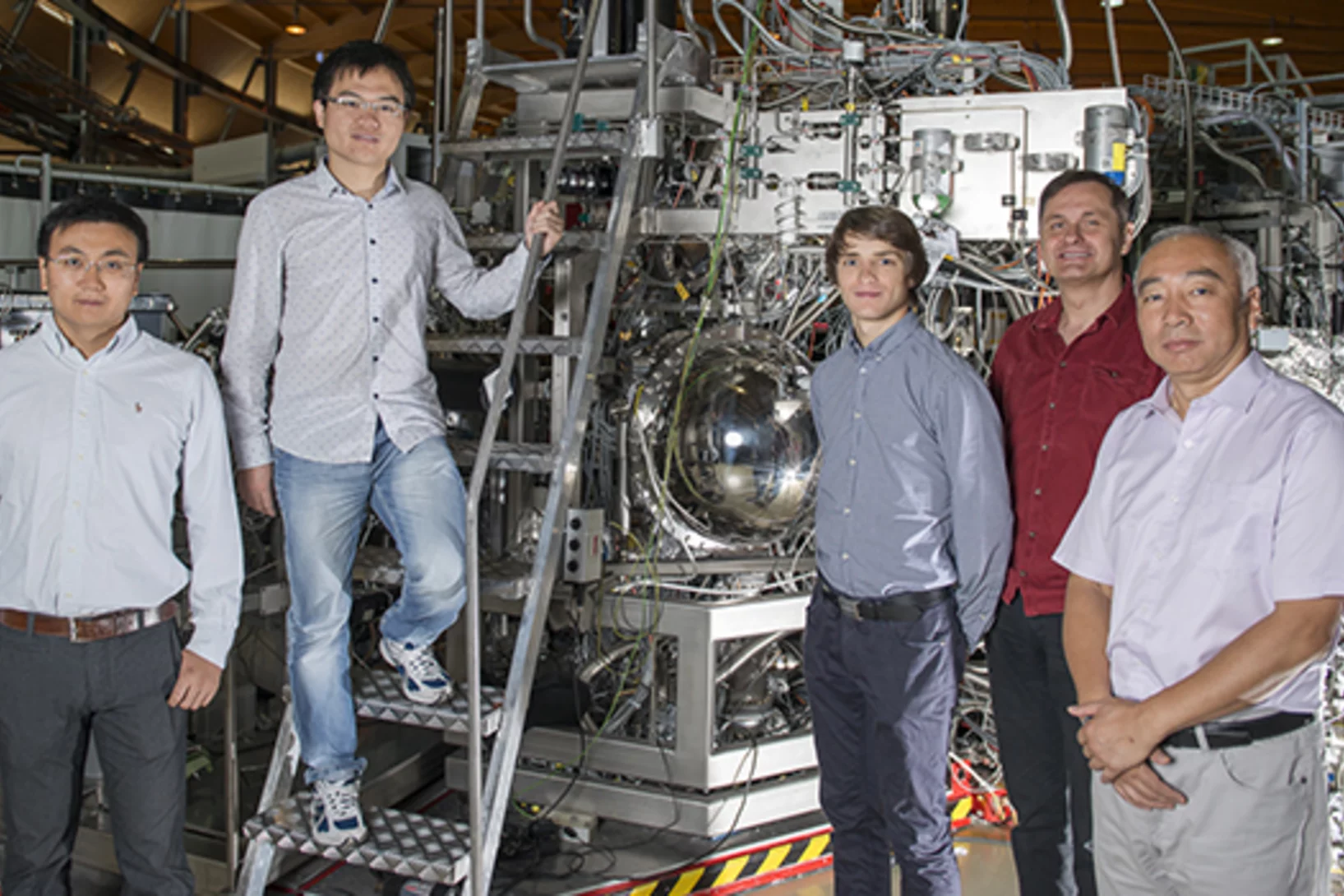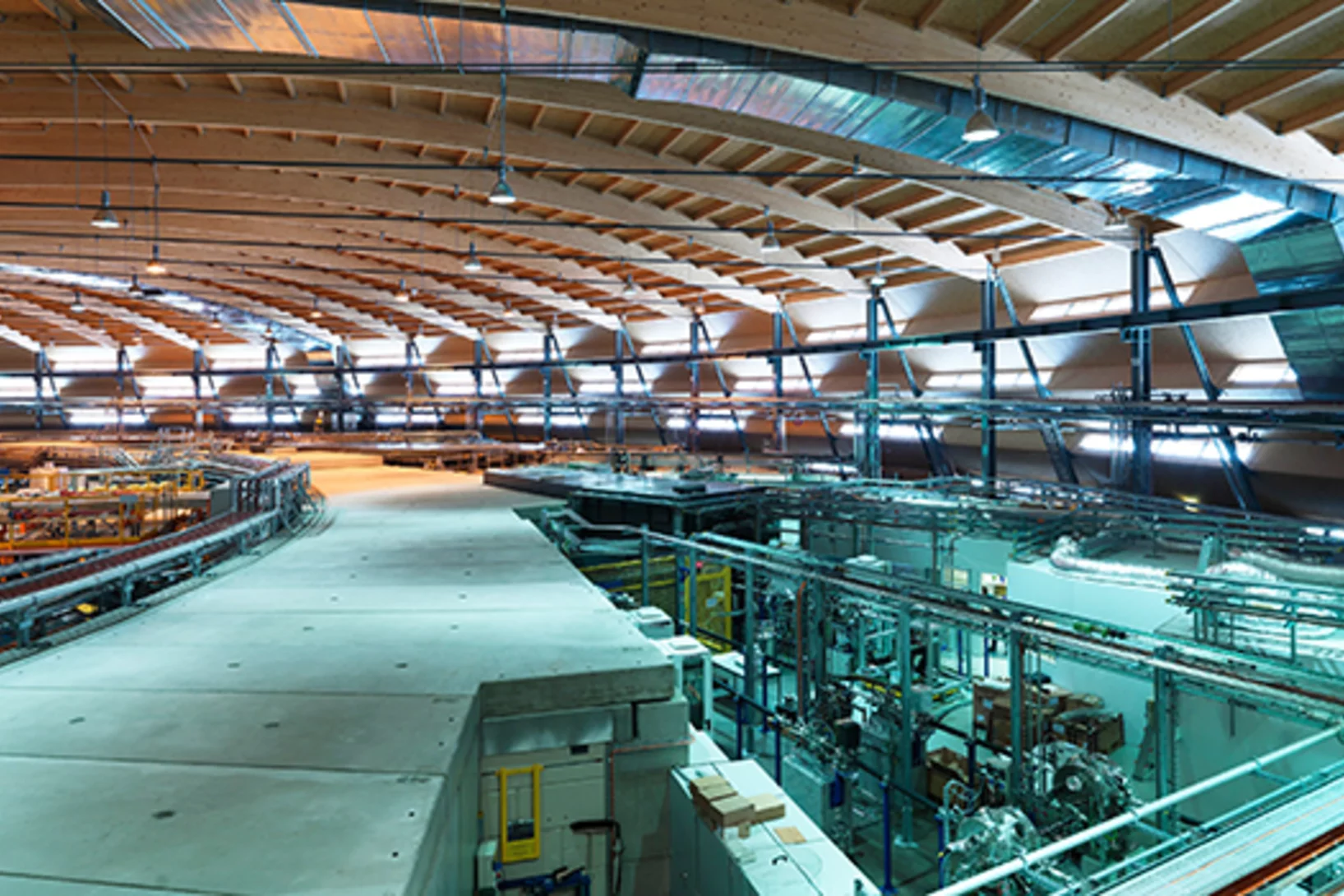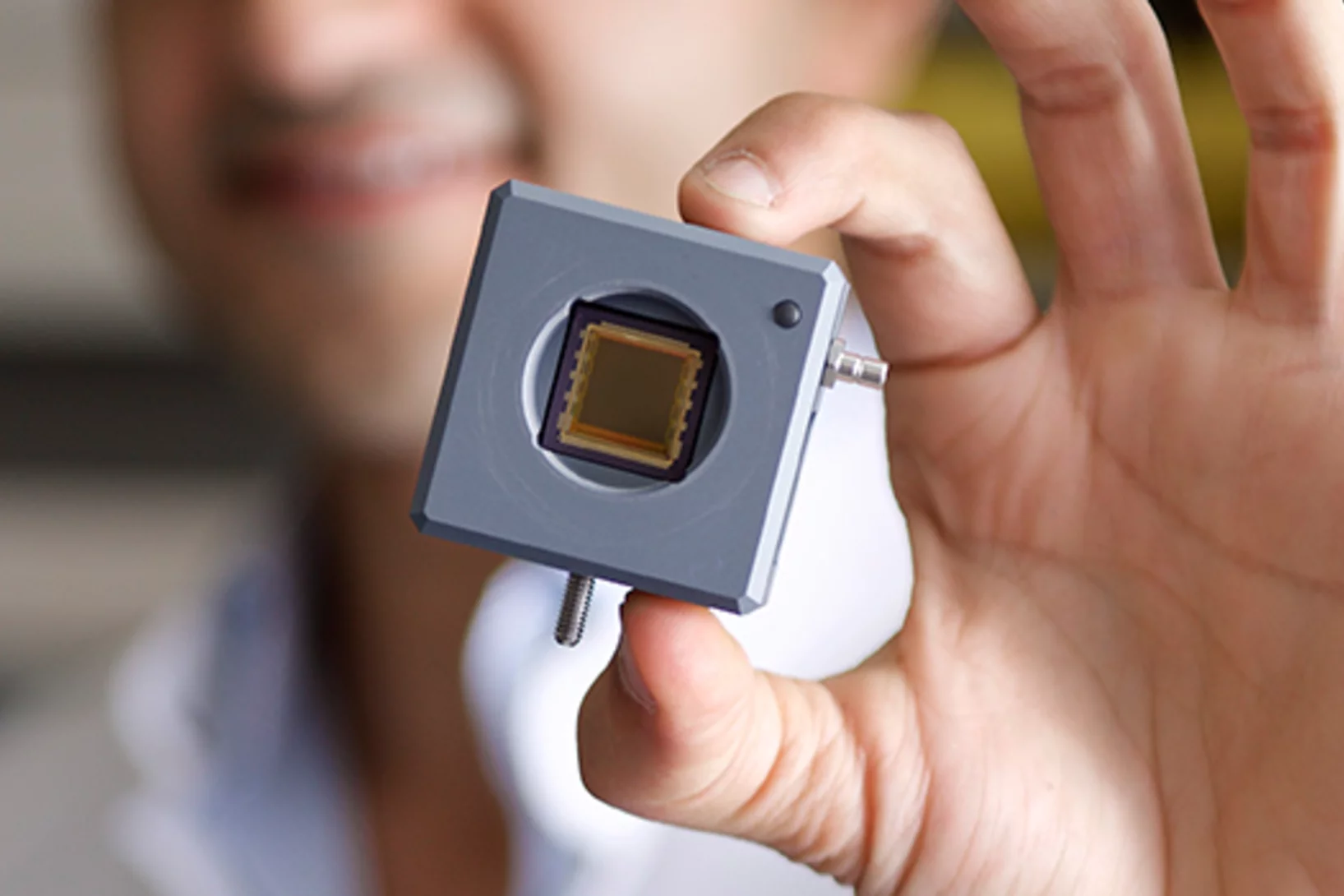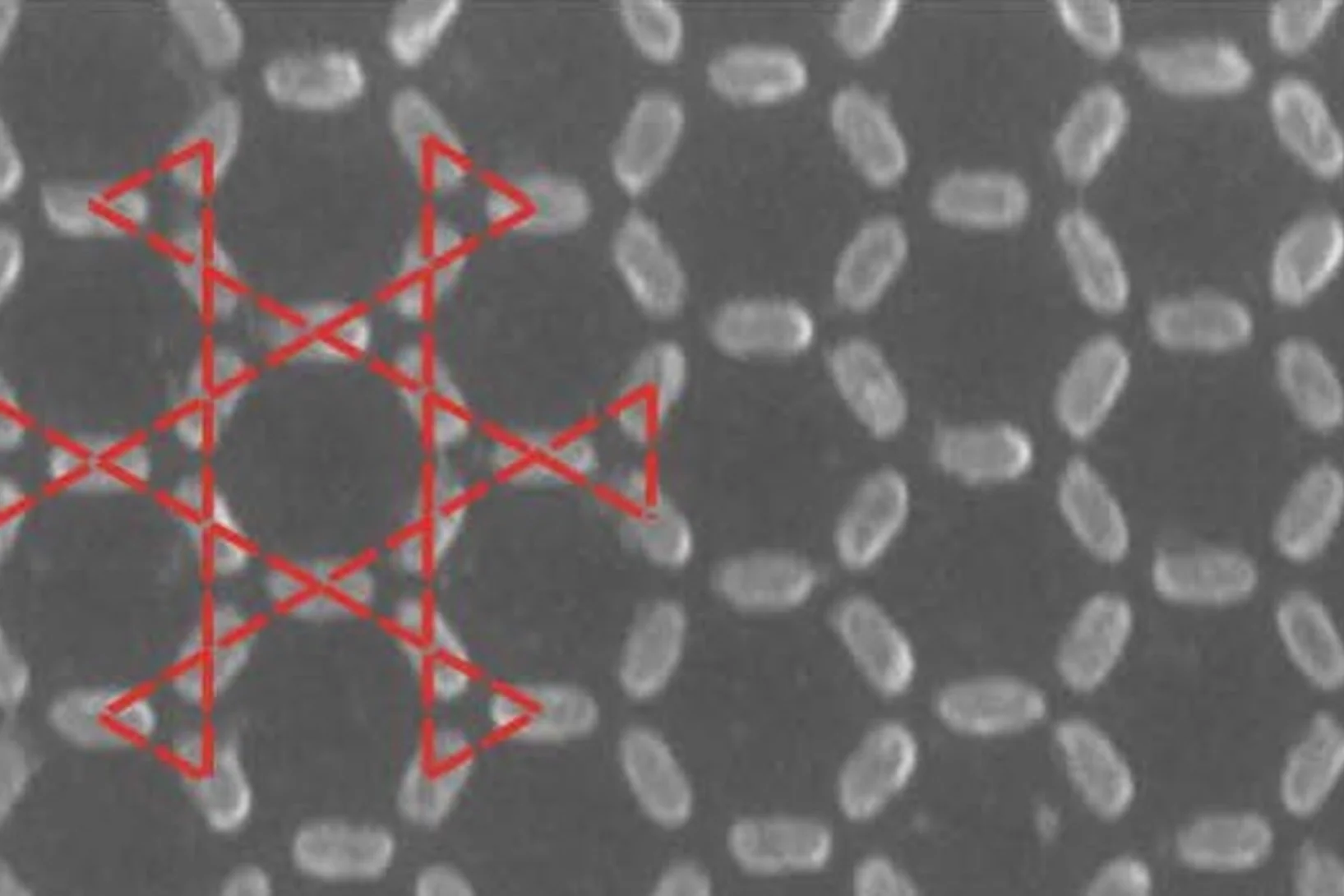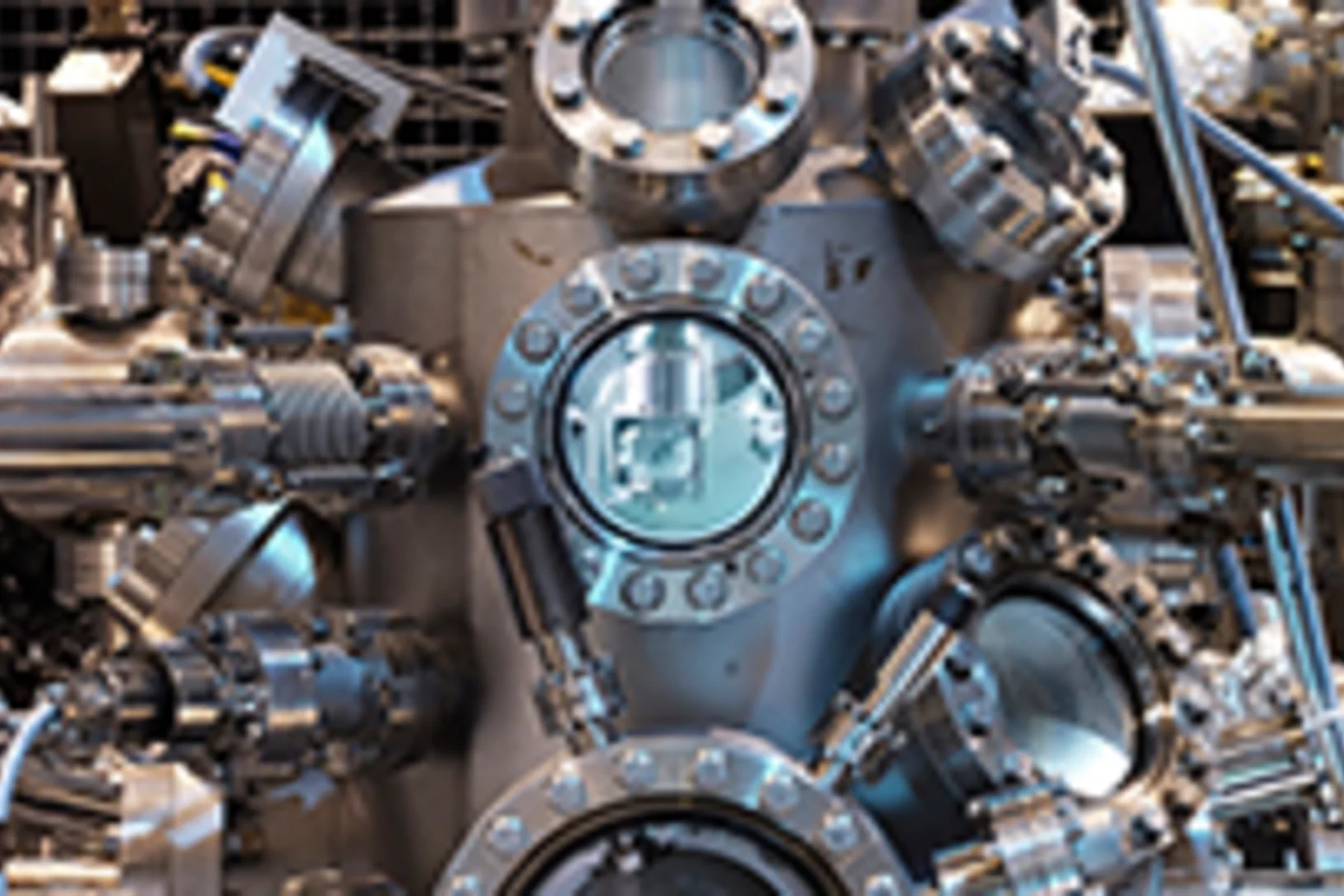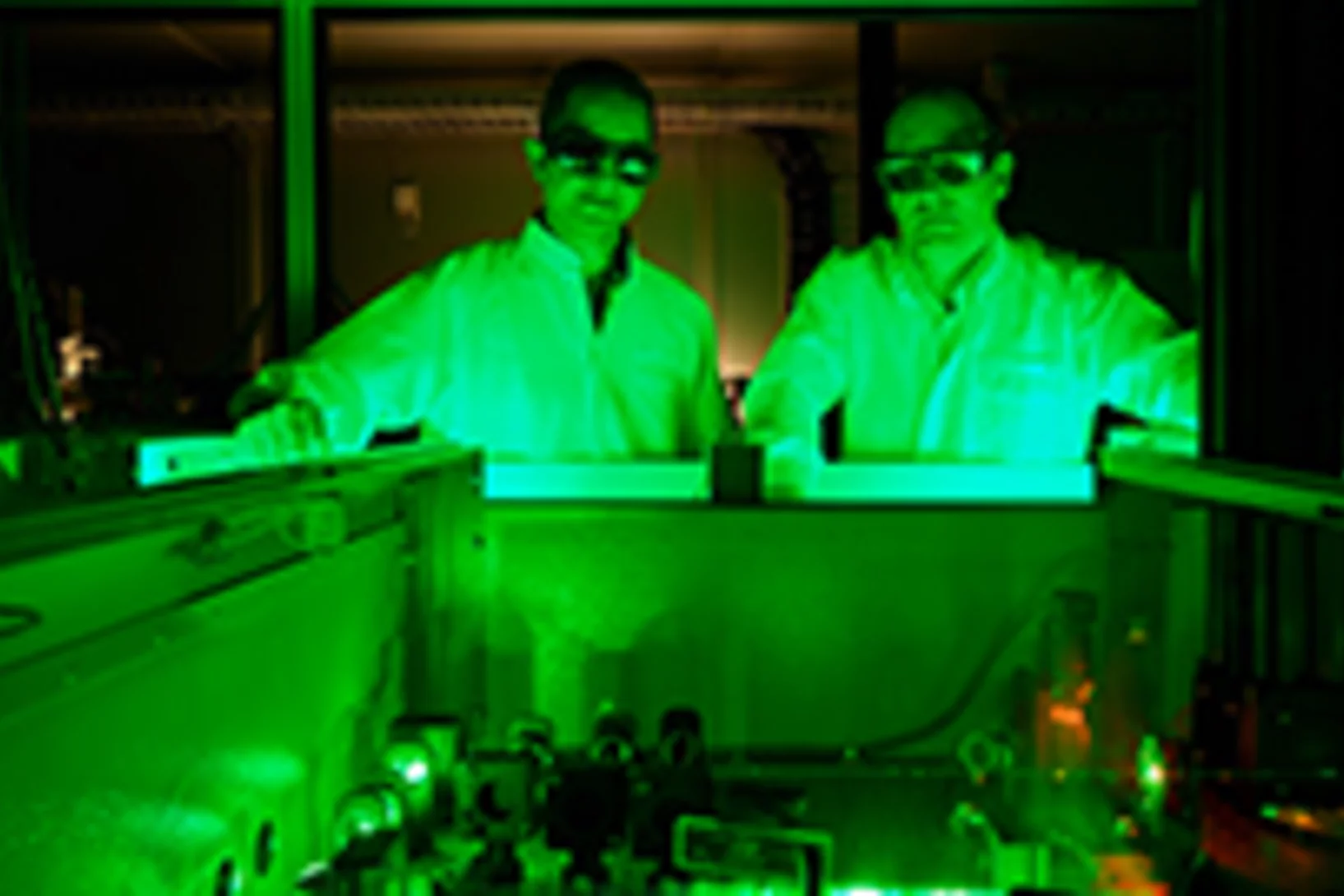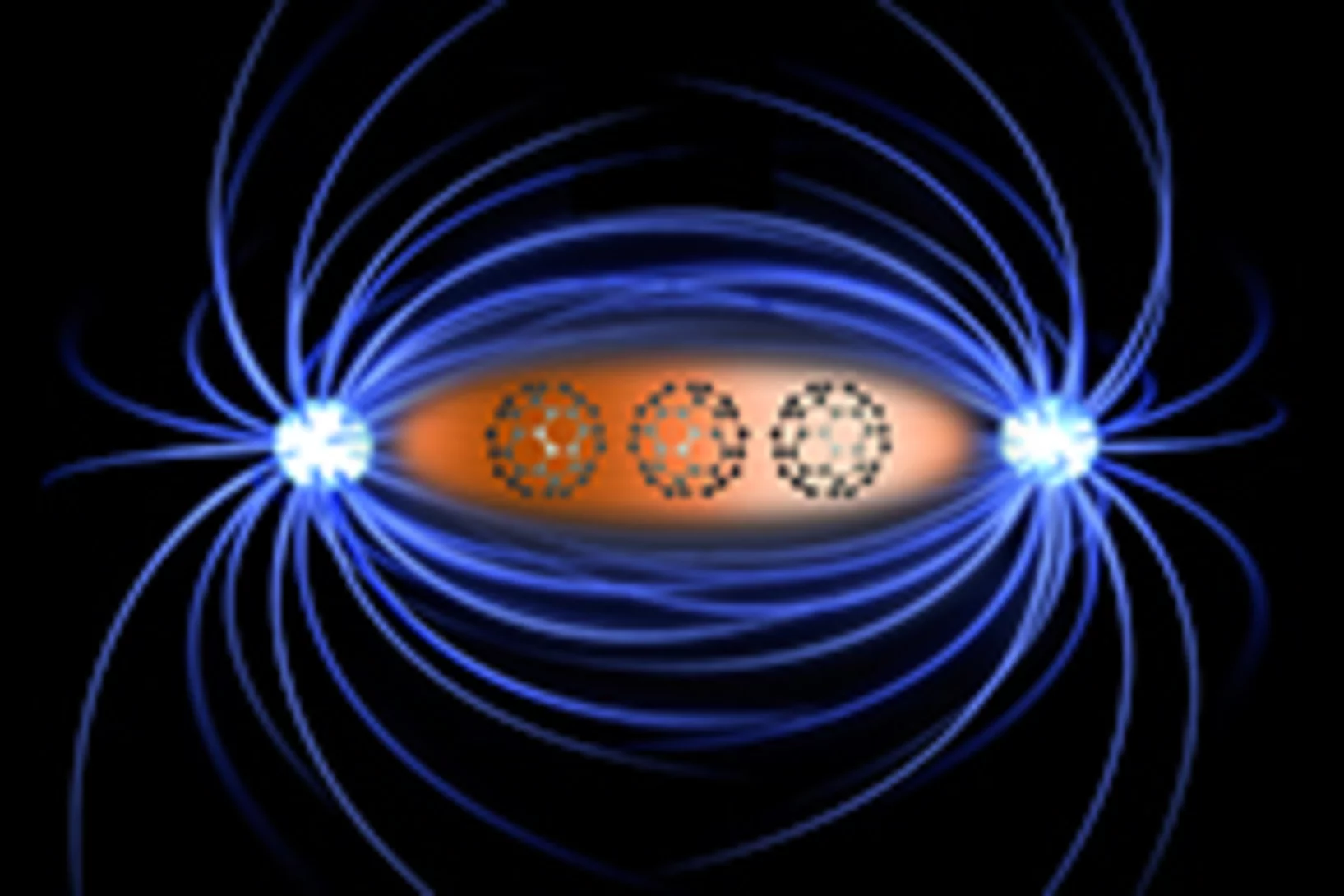The manifold characteristics of materials are determined by what type of atoms they are made of, how these atoms are arranged, and how they move. In the research area Future Technologies, scientists at the Paul Scherrer Institute are trying to clarify this link between the internal structure and the observable properties of different materials. They want to use this knowledge as fundamental principles for new applications – whether in medicine, information technology or energy generation and storage – or to explore innovative manufacturing processes for industry.
Find out more at: Future Technologies
Power from nanomagnets
Oles Sendetskyi, winner of a Founder Fellowship at the Paul Scherrer Institute PSI, wants to use polarity reversal in nanomagnets to develop a sustainable power source for small devices.
Still no sign of dark matter
No evidence of dark matter made of axions – result of an experiment at the Paul Scherrer Institute PSI further constrains theories about the nature of dark matter.
Diving into magnets
For the first time, scientists have made visible the directions of the magnetisation inside a 3D magnetic object. The smallest details in their visualisation were ten thousand times smaller than a millimetre. Among others, the magnetic structure contained one outstanding kind of pattern: magnetic singularities called Bloch points, which up to now were only known in theory.
Research experience from California benefits Swiss X-ray free-electron laser SwissFEL
An X-ray free-electron laser (XFEL) is capable of visualizing extremely fast structural and electronic processes. Pilot experiments will take place at the PSI's Swiss Free-Electron Laser (SwissFEL) from the end of 2017 on. Two current publications in Science and Nature Communications demonstrate the kind of outstanding scientific work that is enabled by such facilities. The work was carried out at the Linac Coherent Light Source (LCLS) in California. Two of the leading authors behind these studies have now relocated to the PSI in order to share their expertise as SwissFEL expands its capabilities.
Quartz powder for the battery of the future
PSI materials researchers have developed a method that provides crucial insights into the charging and discharging processes of lithium-sulphur batteries. And the method revealed: with quartz powder added to the battery, its available energy increases and the gradual loss of capacity is much weaker.
Successful for 20 years: Probing materials with particles
Whether they study materials for the electronics of the future, batteries, or swords from the Bronze Age — for 20 years researchers from a range of disciplines have been using the Swiss Spallation Neutron Source SINQ of the Paul Scherrer Institute PSI for their investigations. At a symposium on 18 April, researchers looked back on the facility's successes and presented plans for modernisation.
3-D X-ray imaging makes the finest details of a computer chip visible
Researchers at the PSI have made detailed 3-D X-ray images of a commercially available computer chip. In their experiment, they examined a small piece that they had cut out of the chip beforehand. This sample remained undamaged throughout the measurement. It is a major challenge for manufacturers to determine if, in the end, the structure of their chips conforms to the specifications. Thus these results represent one important application of an X-ray tomography method that the PSI researchers have been developing for several years.
Towards energy-saving data storage
A new material could become the basis for future data storage devices, since it may enable significant reductions in energy demands in comparison to present-day hard drives. It is a material from the class of so-called magnetoelectric multiferroics, exhibiting the necessary magnetic properties even at room temperature.
Under the chemical microscope
Interview with Daniel GrolimundAt the Swiss Light Source SLS, researcher Daniel Grolimund is responsible for a beamline where the arrangement of chemical bonds in different objects can be determined. These capabilities prove valuable to researchers in the most diverse disciplines: to battery researchers as well as biologists, archeologists, and many more. In this interview Grolimund talks about the variety of topics and the challenges that come with this diversity.
Selectively conductive or insulating
The material neodymium nickel oxide is either a metal or an insulator, depending on its temperature. The possibility to control this transition electrically makes the material a potential candidate for transistors in modern electronic devices. By means of a sophisticated development of X-ray scattering, researchers at the Paul Scherrer Institute PSI have now been able to track down the cause of this transition: electrons around the oxygen atoms are rearranging.
Physicists at the PSI’s large-scale research facilities are thinking beyond the Nobel Prize theories
This year’s Nobel Prize for Physics goes to David Thouless, Duncan Haldane, and Michael Kosterlitz. The Academy also cited, in its background report, experiments carried out by Michel Kenzelmann, who today is a laboratory head at the PSI. He and other researchers at the PSI continue to do experiments based on the theories now honoured by the Nobel Prize.
ERC funding of €2.4 million for research on fundamental interactions in magnets
Christian Rüegg has been awarded a prestigious Consolidator Grant from the European Research Council (ERC). With this funding he will continue to investigate how the smallest magnetic building blocks of matter interact.
En route to better transformers
Thanks to an ultramodern research method, scientists have successfully looked inside transformers and observed the magnetic domains at work in the interior of a transformer’s iron core. Transformers are indispensable in regulating electricity both in industry and in domestic households. The current research results show that the new examination method can be profitably applied to develop more efficient transformers.
The deuteron too poses a mystery
The deuteron — just like the proton — is smaller than previously thoughtThe deuteron — one of the simplest atomic nuclei, consisting of just one proton and one neutron — is considerably smaller than previously thought. This new research finding fits with a 2010 study in which, similarly, the proton was measured at the Paul Scherrer Institute and, likewise, a smaller value than expected was found. The result from 2010 formed the basis for what has been known since then as the proton radius puzzle.
Hitching a ride to gamma-ray bursts
Researchers at the PSI have developed a detector called POLAR. It is designed to search out and investigate extreme eruptions of energy from the depths of the universe. This coming September, POLAR will be launched into orbit with a Chinese space mission.
Rechargeable batteries that last longer and recharge more rapidly
Researchers at the Swiss Paul Scherrer Institute PSI and ETH Zurich have developed a simple and cost-effective procedure for significantly enhancing the performance of conventional Li-ion rechargeable batteries. Whether in wristwatches, smartphones, laptops or cars, the use of rechargeable batteries will be optimized in all areas of application, considerably extending storage capacity as well as cutting down charging times.
One atom at a time
At the PSI, the Heavy Elements Research Group explores the exotic, unstable atoms at the end of the periodic table of elements. The dream: to discover one day the island of stability that could exist beyond the elements charted so far on the chemists' map.
Zebra - a new instrument for the PSI
Interview with Oksana ZaharkoNew scientific questions demand ever better experimental equipment. In this interview, PSI researcher Oksana Zaharko reports on the challenges of setting up a new instrument for research with neutrons.
New particle could form the basis of energy-saving electronics
The Weyl fermion, just discovered in the past year, moves through materials practically without resistance. Now researchers are showing how it could be put to use in electronic components.
A micrometer-sized model of the Matterhorn
Researchers at the Paul Scherrer Institute have produced large numbers of detailed models of the Matterhorn, each one less than a tenth of a millimetre in size. With this, they demonstrated how 3-D objects so delicate could be mass-produced. Materials whose surface is covered with a pattern of such tiny 3-D structures often have special properties, which could for example help to reduce the wear and tear of machine parts.
Slowed down current could point the way to energy-saving computers
Computers and other electronic devices account for a substantial portion of worldwide energy use. With today’s technologies, it is not possible to reduce this energy consumption significantly any further; chips in the energy-saving electronics of the future will hence have to be made from novel materials. Researchers at the Paul Scherrer Institute PSI have now found important clues in the search for such materials.
Neutrons reveal distribution of flux-tube islands
Usually, superconductors expel magnetic fields. In type II superconductors, however, thin channels – so-called flux tubes – are formed. The magnetic field is guided through these tubes while the rest of the material remains field-free and superconducting. In the metal niobium, the flux tubes bunch together into small islands that create complex patterns similar to those found in other fields of nature. A team of researchers from PSI and TU München were the first to conduct neutron experiments to study these patterns in niobium and determine the distribution of the islands in detail.
Electron’s cousin discovered after eighty-six-year search
In a series of experiments at the Swiss Light Source SLS, physicists from the Paul Scherrer Institute PSI have discovered a particle, the existence of which was predicted eighty-six years ago. It is a member of the particle family that also includes the electron, the carrier of electrical currents. The particle now discovered is massless and can exist only within a special class of materials known as Weyl semi-metals.
Structure of concrete disease
solved
When bridges, dam walls and other structures made of concrete are streaked with dark cracks after a few decades, the culprit is the so-called the concrete disease. Researchers from the Paul Scherrer Institute PSI and Empa have now solved the structure of the material produced in these cracks at atomic level - and have thereby discovered a previously unknown crystalline arrangement of the atoms.
X-ray research in the UFO
At first glance, the Swiss Light Source SLS stands out as a striking building. The inside reveals a setting of cutting-edge research. A journey through a world where electrons race a slalom course and X-rays help decode proteins.
Put in perspective
Researchers from the Paul Scherrer Institute PSI have succeeded in using commercially available camera technology to visualise terahertz light. In doing so, they are enabling a low-cost alternative to the procedure available to date, whilst simultaneously increasing the comparative image resolution by a factor of 25. The special properties of terahertz light make it potentially advantageous for many applications. At PSI, it will be used for the experiments on the X-ray free-electron laser SwissFEL.
Tiny magnets mimic steam, water and ice
Researchers at the Paul Scherrer Institute (PSI) created a synthetic material out of 1 billion tiny magnets. Astonishingly, it now appears that the magnetic properties of this so-called metamaterial change with the temperature, so that it can take on different states; just like water has a gaseous, liquid and a solid state.
In search of the smallest bit
For increasingly compact storage media, magnetic areas – the memory bits – also need to become smaller and smaller. But just how small can a magnet be? Frithjof Nolting and his colleagues at the Paul Scherrer Institute investigate the surprising phenomena in the field of nanomagnetism.
Terahertz laser light focused to the extreme
Researchers from the Paul Scherrer Institute have managed to focus the light pulse terahertz laser at the limit of what is permitted by the classical laws of physics. This opens up new possibilities for studying the properties of materials.
Magnets made of non-magnetic metals
For the first time, an international research team has demonstrated how to generate magnetism in metals that aren’t naturally magnetic, such as copper. The discovery could help develop novel magnets for a wide range of technical applications. Crucial measurements to understand this phenomenon were carried out at PSI à the only place where magnetic processes inside materials can be studied in sufficient detail.

